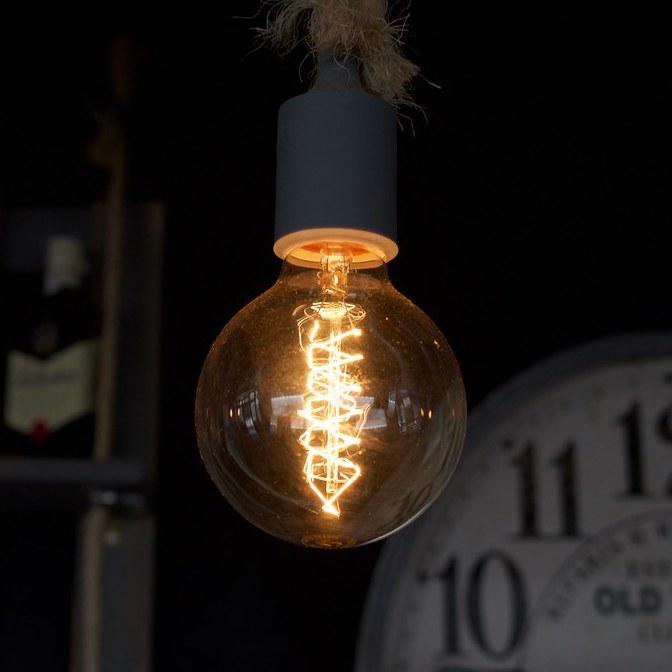Specifically, here are some of the ways you can reduce your exposure to blue light:
- Blue light blocking glasses. Blue light is characterized by its short wavelength and high energy, similar to UV rays. We wear dark UV blocking glasses when we’re out in the sun; it makes sense to protect your eyes while indoors too. Blue light-filtering lenses can added to prescription and nonprescription frames. Warby Parker offers a blue light-filtering lens option as part of their “home try on” service. They’ll ship up to five frames to your home to try on for five days. They also offer a “virtual try on” option.
- Reduce your exposure to blue light – dim the lights, reduce the amount of time spent viewing electronic devices. Several companies (such as Apple’s iphone) offer “screen time” monitors for this purpose.
- Change your indoor lighting. LED lights emit more blue light than incandescent bulbs. A few companies have developed LED bulbs with low blue light emissions. “The Bedtime Bulb Store” sells a product called “Low-Blue Light Bulb for Healthy Sleep and Baby” specifically designed to reduce blue light exposure. More about this product is available on Amazon (Low-Blue Light Bulb for Healthy Sleep and Baby).
- Another lighting product called the “Miracle LED bulb” was created to improve melatonin levels. Reduced melatonin levels may play a role in certain types of cancers. Sold online, Miracle LED “blue blocking bulbs” are designed to be energy efficient and blue light blocking. According to the description on their Amazon website their product “emits no blue light, as well as saving up to $46 a year on energy costs with our groundbreaking LED technology. Blocking out blue light may help prevent sleep disorders, help get you ready for bed, and help prevent migraines. Cut out the blue light and give your system a chance to create melatonin naturally. Blue Blocking series is designed for you to study your own relaxing areas with bulbs that inhibit blue spectrum light. Blue Blocking bulbs are NOT replacements for actual medical procedures or tests. They are not meant to treat medical conditions of people that find trouble sleeping. These bulbs only remove the presence and emission of blue spectrum HEV light within the light.”
- Blue light blocking software and physical screens can be used on electronic devices. Iris software is one company working on this currently and offers a free download on their website at https://iristech.co/
- Use “night mode” on your phone and devices. The darker hues may help with relaxation late at night. Better yet, try to avoid light exposure at least 2 hours before bedtime – admittedly that can be tough for some of us.
- Add a screen protector with built in blue light reduction. Blue Light Blocking Screen Protector Panels are widely available. Simply enter “Blue Light Blocking Screen Protector” into your favorite search engine.
- Sleep enhancing light bulbs (red and orange “lower energy” light spectrum) are another option – although total darkness is probably a better option. A nighttime “eye mask” can block out all light. The downside of wearing a mask is comfort and being able to make sure it remains on throughout the night.
In Summary
Blue light emissions can be mitigated.
The simplest way is to reduce exposure. Select lighting with low blue light emission ratings for night time use . Reduce the amount of screen time. Use night mode settings on electronic devices. Add physical barriers – blue light blocking screen protectors, eyeglass lenses, light bulbs etc.
Buy quality LED bulbs from established lighting companies. Don’t go cheap. Change your bulbs if you begin to notice color shift or flickering.
Try to use natural light in your home as much as possible during the day. At night, use dim lighting, preferably in the warm amber and red orange lower energy ranges.
The choice of lighting in your home is more than cosmetic. It can have a profound influence on your overall mood and health. Most people probably give it very little thought but that’s a mistake. New lighting technology requires new knowledge. Did you know that LED lights can change color over time? That’s right. It’s called “color shift.” The lighting industry has known about this problem for years. Color shift is the reason why initially warm LED lights start to give off a blue or green tinged light as they age. Yes, even lights are subject to the effects of aging. Shifting of LED light color from warm to blue tones is most common in bulbs with ultra long lifespans. LED bulbs produce energy and heat that damages the bulb’s materials over time. Color shift is due to the breakdown of phosphor inside the bulb and it can look ugly ! It could also indicate greater blue light emission levels. Different environmental factors (excessive heat and humidity) can also damage LED bulbs. Color shift can also result in lighting mismatch and other unattractive colors – yellow, green, pink, etc. Something to think about the next time you reach to replace your old bulb. More on this topic can be found on the Amerlux website (https://blog.amerlux.com/color-shift-why-it-happens-in-leds-and-the-simple-way-to-avoid-it/).
